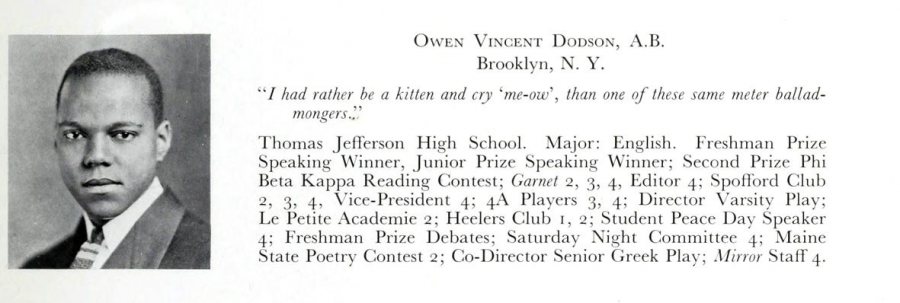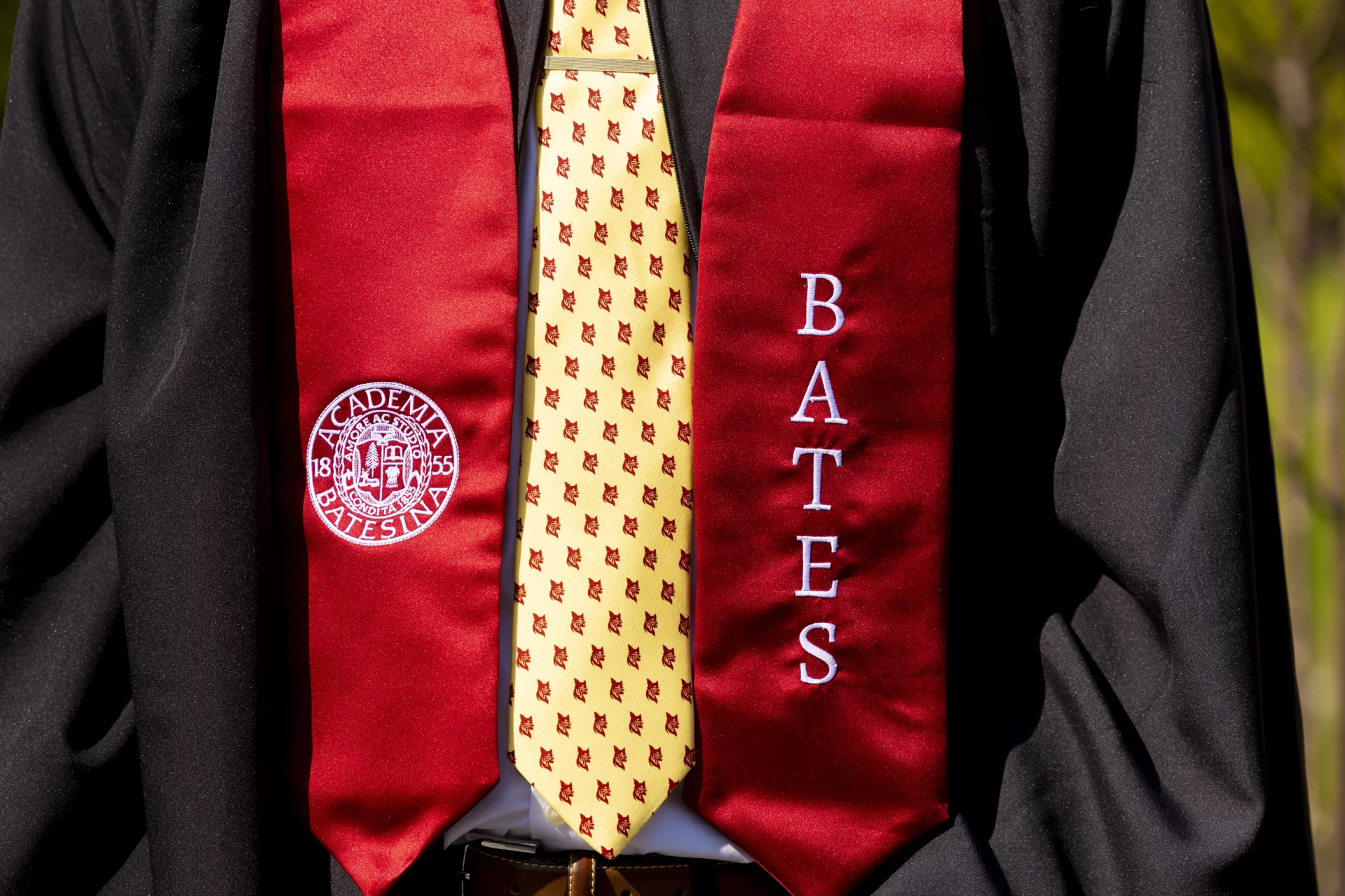
Connections among generations of Bates people have strong presence here. And that’s what we will talk about today — about the “Rivers and Roads” connecting us, as the senior a cappella voices have just sung.
For four years, you have lived in a place of much history and meaning. Much of that comes from the place where you are, quite literally. Scan the Quad from the Gomes Chapel to Parker, Hathorn, Coram, and Carnegie. Where you sit right now — and where you will graduate tomorrow — carries great meaning.
Here on this step, I talked to a grad who was passing by. She recalled how her father wanted her to go to a great school to match her talents. So while she was at the Admission Office for her interview, her father found his way to the Bates steam plant — his profession at another college — and talked to the employees there. He did this at every school she visited.
Baccalaureate Address
This essay is adapted from James Reese’s address at the annual Baccalaureate service on May 27, 2017.
When she nervously encountered him after her interview, she was relieved and thrilled to hear him say, “You can go here.” He had learned, he told her, that the students “say hello to everyone and treat the staff with respect. It’s OK for you to apply here.” That’s the story she tells about Bates. Her mother, also excited to have returned to campus, was standing with us as she told me. It was a powerful moment, and it happened right here.
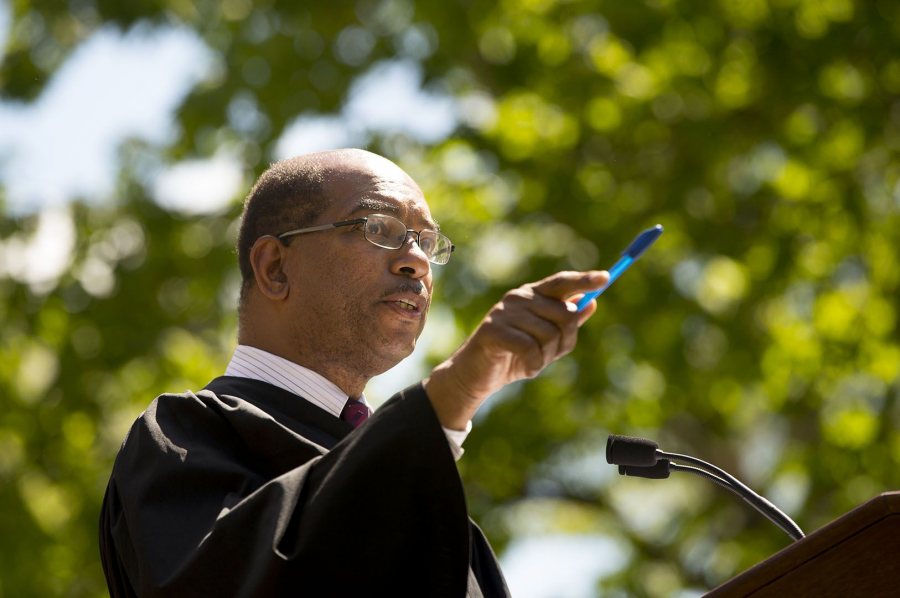
Associate Dean James Reese delivers the Baccalaureate address on May 27. (Phyllis Graber Jensen/Bates College)
You sit facing Coram, where plays were conducted on this platform in the 1920s and 1930s framed by the building’s features designed with performances in mind. One graduate in the Class of 1936, Owen Dodson, was known as a great student director, as several of you are.
He went on to become the celebrated chair of the Howard University drama department, and he was anthologized in many works for his plays and poetry. We now know that renowned author Toni Morrison considered him a primary mentor. He walked this Quad and directed on this stage, and we wonder if inspirations from this place went on to become conversations that he and Morrison shared.
Benjamin Mays, Class of 1920, and the Rev. Martin Luther King Jr. had such a close connection that they agreed that whoever passed away first, the other would deliver the eulogy. Sadly, it came to be that Dr. Mays
had to do that for his close mentee. It has been said that King’s work — and history itself — may have been a bit different without Mays presence in King’s life. Benjamin Mays visited Mahatma Gandhi and he encouraged King to make that same connection in his young life for purposes that would benefit us all.
I love the story of the 1963 Bates graduate from New Hampshire who asked permission of his Army sergeant to leave his post to go downtown in Washington, D.C., in August 1963 to listen to this young black minister who was going to speak at the Lincoln Memorial. That was the “I Have a Dream” speech. He said that conversations at Bates prompted him to make that decision to ask to go. And he said it changed his life.
All these people are connected here. It is a spirit, and a set of sentiments, and a set of expectations of engagement that pervade the place.
Justice, participation, equality, honor, and connection indeed fill Bates. When we struggle with circumstances, as we have recently, we are stretched and sometimes we are not sure what to do or think. Stand by the thoughts you are continuing to discern, and be genuine in what you say. And be an interested and careful listener.
To summon further understanding, we must be genuine and hope that others know we are — and hope that they are, too. And abide by what we all have come to know in life: You can’t judge a book by its cover, or a student by where they are from, or a person by their appearance. We know this, especially at Bates.
Bates was one of the schools to accept students. “Because of that, I have never forgotten Bates,” she said.
In the early 1990s, famed author James Michener came to Bates for a tour of the Olin Arts Center and the campus. With him was his third wife, Mari Yoriko Sabusawa, who happened to be of Japanese ancestry. On the tour, it was reported that she asked many questions about Bates, and at the end of the tour she was asked about her interest in the college.
She explained that her parents were Japanese immigrants, and that when the U.S. entered World War II, her family was moved to an internment camp in California. There, the elders of the camps asked the U.S. government if college-aged individuals in the camps could be allowed to leave and enter college, if accepted.
Much to my surprise, I learned that the government said yes, thanks to strong urging from some college presidents in the West and from Quakers, among other groups. Then she said that Bates was one of the schools to accept students (Bates enrolled five). “Because of that, I have never forgotten Bates,” she said.
I was almost transfixed: They were speaking as if they could have been right here on the Bates campus.
We have high expectations at Bates. They were put in place, along with other defining principles, by our founder. I visited with a group of older people from another college a few years ago, and they were talking about life on their campus and their love of their school.
They said they enjoyed how men and women attended school together, how all the organizations were open to everyone, and how there were no fraternities or sororities. They enjoyed having the engagement of faculty and staff, including exchanges after evening lectures, and how that was the spirit and nature of their campus. I was almost transfixed: They were speaking as if they could have been right here on the Bates campus.
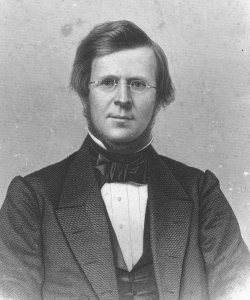
Bates founder Oren Cheney also had a major role in the founding of Storer College, in 1867.
I was visiting a campus in Harpers Ferry, W.V., and speaking to some of the remaining living graduates of the Alumni Association of Storer College, an institution founded for freed slaves in 1867 thanks to the influence of Oren B. Cheney, the founder of Bates. That institution held on until 1955, and they will have their 150th anniversary in October. Importantly, several Bates grads over many decades went there to teach, and as I engaged more with the graduates that day they started to recall how several teachers and administrators were from Bates.
Storer had its glory days. One was May 30, 1881, when Frederick Douglass visited the campus and delivered his speech on John Brown and freedom. Another was Aug. 17, 1906: the second meeting of the historic Niagara Conference — which would become the NAACP in 1909.
During that meeting, W.E.B. Dubois led a moving commemoration of John Brown. Importantly, Bates people were there that day. I also have identified that Storer has a stained glass window in their chapel that says, “Lewiston.” Every Bates grad must see and be moved by that window.
Frederick Douglass and Oren B. Cheney were close friends, and Cheney attended Douglass’s funeral and was reputed to have offered some of the highest remarks about Douglass at that occasion.
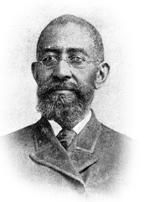
A slave who escaped the South, John Dungee later studies at Maine State Seminary.
Douglass was friends with abolitionist William Still, who once helped an escaped slave, John Dunjee, travel the Underground Railroad to Canada, where Dunjee remained until after the Civil War. (Dungee escaped from the plantation of John Tyler, the 10th U.S. president, and Dunjee’s children have said that he was Tyler’s grandson. In his presidential campaign, Tyler had to answer questions about fathering boys to sell in slavery.)
By September 1866, Dunjee was here on this Quad, enrolled as a student in Oren Cheney’s new school, the Maine State Seminary. I’m sure that Dunjee arrived here due to the close connection between Douglass and Cheney.
My own family has a story about being descended from John Tyler’s plantation in Virginia. When I was 12, a great aunt told me the story, and I chose to ride off on my bike rather than listen to her wild tale. But after reading the story of John Dunjee and his bona fide connection to Tyler and his trek to freedom and to here, I decided to return to pursue our family story, and now we seem to be just one bill of sale away from demonstrating that Aunt Alma was speaking with accuracy about being from that same plantation.
Bob Moses is a noted civil rights figure, and many would say his work matched that of King’s. When Bob Moses came to Bates to speak of his experiences in the 1960s, I asked him how he had chosen to go to Hamilton College. He smiled and said that when he graduated from high school in New York, he only applied to two colleges: Hamilton and Bates. “The only reason I went to Hamilton was because they offered me $300 more than Bates.” So Bates was only $300 from playing an even larger role in the civil rights movement.
On a Reunion weekend some years ago, an African American graduate of the Class of 1938 asked if I could gather some students so she could chat with them. I did as she asked, and we had a nice conversation.
Forty-five minutes into the chat, I could not wait any longer — I had to ask about her name, Ellen Craft Dammond, because there’s a famous slave-escape story of a fair-skinned woman, Ellen Craft, who dressed as a white man and, with her husband, William, as her attending “slave,” took a train and a ship to freedom in Philadelphia. Was she, Ellen Craft Dammond, related?
“Yes,” she said, “Ellen Craft was my great-great-grandmother.”
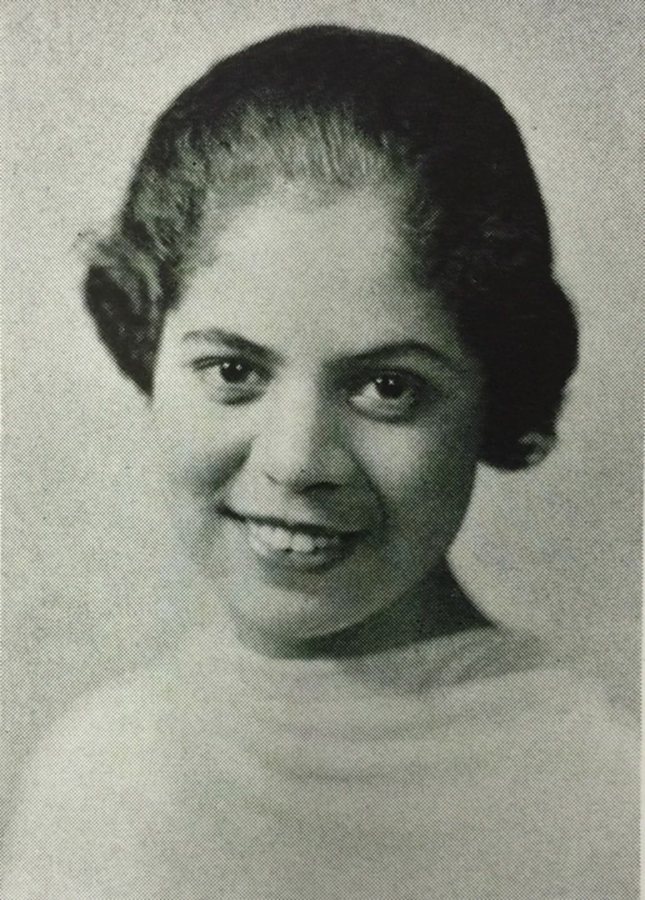
The 1938 Mirror yearbook has this portrait of Ellen Craft Dammond ’38.
Ellen Dammond loved Bates and immersed herself in the place and in the debate program. Googling her alongside a student a couple years ago, there she was in a picture from 1936 sitting with a great smile and spirit. Seated next to her in the photo was none other than Owen Dodson ’36.
She went on to work in civil rights activities after Bates and raise a family. Her daughter, who is very fond of Bates, said that her own civil rights contributions connected with Bob Moses and they became great friends and did significant work for our society.
Baccalaureate is about the spiritual. Our Bates spirit, drawn from the various global philosophical practices and beliefs, forms the connections we feel toward each other. Some experiences even touch on the nearly divine, as this next story illustrates.
I was in Honduras, and four days into my stay, I started yearning for oatmeal. So my wife and I went to a store, and since I speak a little Spanish, I found the oatmeal after five minutes. As I reached up, someone grabbed my arm. I turned to my right, and there was a Bates graduate. “Dean Reese, what are you doing here?” she asked. I looked at her and said, “Heidi, what are you doing here?” She said that she was in the Peace Corps, working in a village two hours away. “This morning, I decided to get on the van and come in to the city so that I could get some oatmeal.”
I have nephew who graduated from Harvard. He said to me, “Uncle James, Harvard is a good school.” (Let me pause and let you know that I am sharing, to you who have been there, that Harvard is a good school.) He said, “Uncle James, Harvard is a good school, but it does not have the Spirit of Bates.”
So here we are, and we know the Bates spirit in its many vivid forms. In 1973, a Bates team was set to depart town after a loss in a holiday basketball tournament in Connecticut. But then, the tournament directors paid the Bates pep band to stay for two more days.
I encourage you, as alumni, to continue your Bates conversations with spirit of interest, engagement, and cooperation. One Bates grad stated that she misses the Bates conversations, the ones, she said, where you intentionally try to get the thoughts, insights, and feelings of everyone in the group, and where you continue to try to meet people.
I have enjoyed all of my conversations with the students over the years and with those many exchanges, some stand out each year.
Mary Grace Schwalbe ’17 will recall that during the opening of the Senior Thesis Exhibition at the Museum of Art, I could not help but stare at her work. I asked her about a particular painting, specifically where she got the wood frame. “Chase Hall,” she said. “I saw it just sitting there in a room, ready to be thrown away.” She asked to have it and decided to use it as a part of the show. The frame had been a part of a billiards cue rack for decades, and she recognized that this age-old, spirited piece and expression of history needed to be preserved.
Some of you are matched up with other Batesies. That’s fine. But the rest of you are not safe just because you will walk across this stage tomorrow.
Spirit — do as my father does and wear a Bates hat in the airports, and experience the joy of someone stopping you and asking how you know Bates. Bates people are everywhere.
Some of you are matched up with other Batesies. That’s fine. But the rest of you are not safe just because you will walk across this stage tomorrow. I have been to three Bates weddings of alumni who did not attend Bates at the same time: They met at Bates club meetings and activities!
I love sharing with our international students the metaphorical meaning of Dorothy’s line in The Wizard of Oz, “Toto, I’ve a feeling we’re not in Kansas anymore.” They love to learn the explanation, and say that they understood its meaning once they arrived here.
But there’s another line from the film that I will share for today’s theme of circular connections: “It was a place. And you…and you…and you…and you were there.” Yes, it’s you — gathering and sharing among each other, in a strength and manner that’s been one over the ages and, indeed, has made you feel that this is much like home. A student from Saudi Arabia told me that “bayt” in Arabic means home. As she was making her decision about college, she thought of that, and it led to her choice.
Dodson, Craft Dammond, Douglas, Moses, King, Mays, Cheney, and now you are intertwined with each other in this home. All were drawn here, or have been informed by conversations and exchanges conducted and strengthened right here.
I conclude by asking you to give the best of yourself, just as you have these past years at Bates. Giving our best is the spirit that prompts everyone to perform well on this stage today. It connects with Dr. Mays, who said, “Whatever you do, strive to do it so well that no person living, and no person deceased, or no person not yet born could do it any better.”
Bates: Freedom, brilliance, strength…add your adjectives to the list, go forth, and do all that you wish and know you can achieve from all of the sharing and the connections you have made and will continue to make.
